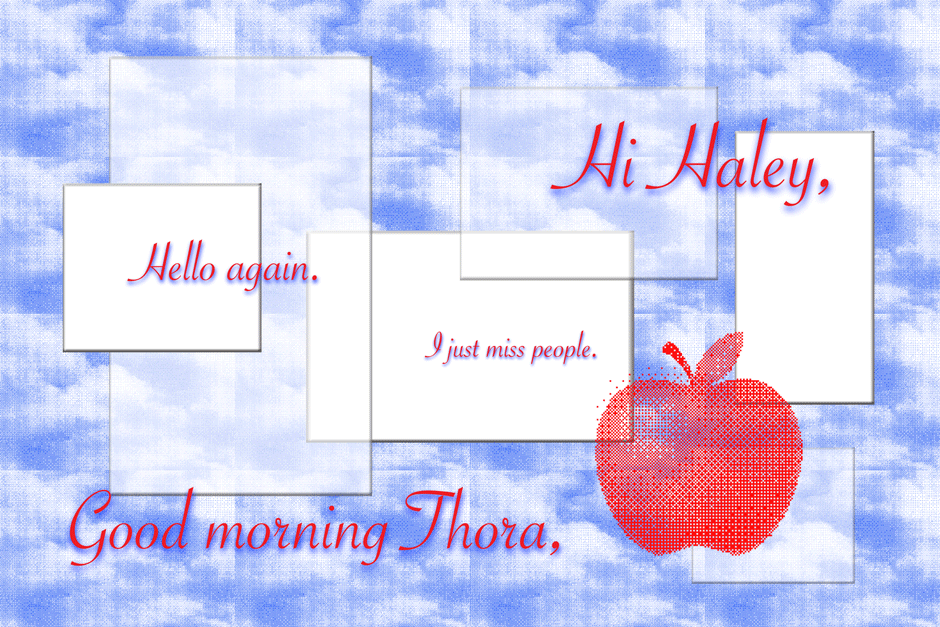In a city of mysteries, a daily revelation
- Share via
After six months of receiving a daily electronic newsletter about New York, I finally hit the reply button and without thinking typed, “Where do you get your ideas?”
An e-mail from MUG -- a.k.a. ManhattanUsersGuide.com -- shows up every morning in my office mail. MUG is about 500 engaging words of useful information and personal opinion about life in New York -- or, as it boasts: “MUG scouts it out and tells it straight.”
By now I know the names of all the bridges in New York and have ridden all the subway lines, but I still expect that around every corner lies something astonishing, something I have never seen or heard about before, and still I hold to the romantic notion of this city as an ultimately unknowable place. So in addition to scanning the local papers and faithfully searching the listings in city magazines, I log on while the coffee drips, looking for a new electronic version of the city. Sites like MUG, DailyCandy, Gothamist, Sugarzine, Lockhartsteele, everythingny, Newyorkish line up in my mailbox like earnest personal assistants waiting to serve me.
It’s a tough task. I’m no longer young or that interested in buying stuff; I’ve also sort of had it with the sideshow barkers and yodelers in the New Yorker’s Talk of the Town. And although I still rely on New York magazine’s best-of edition for practical advice, by now I have an exterminator, a seltzer man and a favorite place to eat antipasti, and I do not need a nude-portrait photographer. And so I go to the Internet every morning for utility with attitude, to find my city.
But the morning that MUG coughed up details about how to put on a funeral, I had to know more about who puts these sites together. I was expecting a tip on the best place to get my legs waxed, and instead I was going six feet under on a Monday morning.
In my imagination the people who produce these websites operate in the ether somewhere (most likely on Long Island) sipping flat Coke in sweatshop-type surroundings. I certainly did not expect an immediate response to my communique from a guy named Charlie who works alone in a one-bedroom apartment near Central Park.
“Is that a You-Have-Such-Interesting-Ideas kind of query or, What-Kind-of-Freak-Comes-Up-With-These-Stories kind of query?” he e-mailed me. “In either case, it all just comes from my addled brain....”
At first I was suspicious that Charlie was a cyber version of the schlubs who sell maps to the stars’ homes -- in other words, another questionable source of cheap, easy information. But what Charlie is hawking is better than that. I had to meet him.
“I do in fact have a corporeal existence in addition to my cyberspace natterings,” he wrote me and we agreed to get together last week for a smoothie.
Theatrical ambitions
It turns out Charles Suisman is a 45-year-old, wry, self-proclaimed foodie who is a tad round. He grew up in Hartford, Conn., and moved to New York the day after his last class at Northwestern University, where he was a theater major. He wanted to be a Broadway producer.
After five years trying to get a new play, “Nick and Nora,” off the ground, it bombed after nine performances. He went to work briefly for a company that arranges bus tours for little old ladies until he decided he had to write about New York -- for New Yorkers. He started the print version of the Manhattan User’s Guide in 1992. It was a monthly newsletter that came on creamy white paper and cost subscribers $44 a year. It included the same range of items -- reviews of new restaurants, descriptions of funky cultural events, service pieces on, say, where to get a turntable repaired -- but critically, written in the voice of Charlie, the maven.
Now on the Internet it’s called blogging, but Charlie went on about the same type of things on paper. He gave his opinions about plays and up-and-coming talents and corrected other writers’ opinions on these topics. He avoided celebrities and introduced New Yorkers who do good works. He did a classic piece on floor covering after he eliminated some hideous tiling in his own kitchen.
“When I started at this there was no Internet, and magazines like New York were doing a lot of what-the-heck-happened-to-New-York? kind of stories, and there weren’t walls of books about New York at chain stores. I felt like there was a little niche for what I wanted to do.”
Although he was making a living and had two assistants, after eight years the cost of operations was getting too high and he stopped publishing. He got along by writing a couple of guides to New York and freelancing, but after Sept. 11 he wanted to get back to scouring the city streets. “I never thought I’d see a tender New York,” he says. “I need to point out that there was no clamor for MUG’s return. But I didn’t know what else to do.”
In January 2003, he started the Web version and gave himself 18 months to make money. He has 12,000 subscribers to the daily e-mail and is banking that they’re the right 12,000 subscribers -- according to Charlie, mostly women who earn an average of $62,000 and live in neighborhoods throughout the city. He plans to look for advertising when he has 20,000.
Which leads to my first question when we get together.
So what’s the difference between you and Adam Moss, the new, hot editor of New York, the prototype of the modern city magazine?
“He’s got a job,” says Charlie without missing a beat.
“He’s Barnes & Noble, I’m a nobody working out of a fifth-floor walk-up. He’s probably got a fancy office and lots of assistants....”
The element of surprise
Charlie may be obscure, invisible and broke, but the eruptions of Charlies on the Internet can’t be ignored. Moss, former editor of New York Times Magazine who has been at his new job just three weeks, says that as he goes about reinventing New York, if that’s what it takes, the “natterings” of a Charlie Suisman are on his mind.
“You have to do things much better in an information-saturated environment,” Moss says. “Our information has to be deeper and treated with some kind of sifting intelligence which makes it more relevant, more necessary than that which you could get elsewhere.”
The template for the city magazine created 36 years ago by New York founder Clay Felker had one element that probably doesn’t need reinventing. Beyond spotting trends or providing so-called service journalism, Felker’s New York understood the element of surprise.
That’s the beauty of what Charlie does. He reads everything he can get his hands on about New York; he walks different neighborhoods a couple of times a week; he asks construction workers what’s going into a place. And then, in about 500 words, he reminds you, like a little elbow in your side every morning, that your belief about the unknowable city is not misplaced.
More to Read
Sign up for The Wild
We’ll help you find the best places to hike, bike and run, as well as the perfect silent spots for meditation and yoga.
You may occasionally receive promotional content from the Los Angeles Times.






